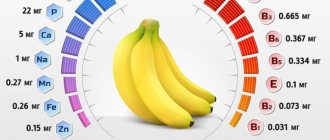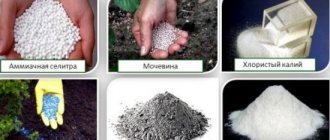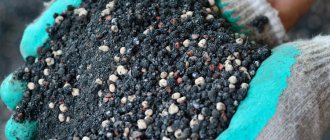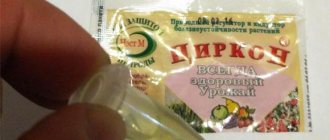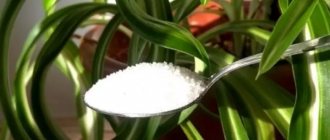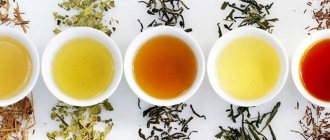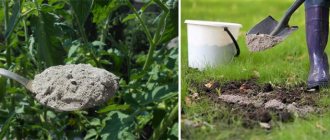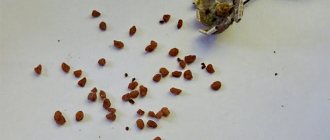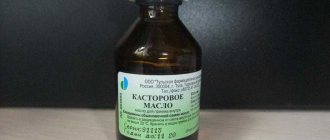Experienced gardeners often recommend using banana peels as fertilizer and using them both separately and as a potassium component for seedlings of crops and flowers. There are several simple recipes for making fertilizer based on banana skins, each of which has been tested over years of growing plants. What many consider to be garbage and throw in a bin, helps seedlings to grow like pies by leaps and bounds, because... The peel of the exotic delicacy contains all the substances important for plant development. By fertilizing seedlings with banana shells, you can significantly increase the quality and quantity of flowers and yield.
What are the benefits of banana peel?
Magnesium and potassium predominate in dried and fresh banana flower food. Other components: phosphorus and sodium, as well as iron, manganese and calcium. Not much nitrogen. This complex of substances is usually used as a stimulator of flowering and fruiting.
Benefits of banana peel fertilizer for indoor flowers:
- root growth;
- strengthening stems;
- uniform distribution of water and nutrients;
- strengthening immunity;
- normalization of photosynthesis;
- protection against diseases.
If we talk about fruit plantings, banana skins will increase the sugar content of the crop. One most often, this homemade fertilizer is used for growing indoor flowers. But there is successful experience in its use for feeding vegetable crops in open ground, garden seedlings and greenhouse vegetables.
Fertilizer for indoor flowers made from banana peels enriches the soil, gives energy to plant cells, accelerates budding, and supports seedlings after transplantation. Seeds germinate faster, and seedlings take root and grow better.
Composition and properties
Banana peel contains a large number of elements beneficial to plants. The most important of them are:
- phosphorus, potassium - necessary for the formation of ovaries, long flowering, bright color of flowers;
- magnesium - activates the process of photosynthesis;
- calcium - improves the solubility of nutritional compounds and their digestibility by the plant;
- nitrogen - in a small amount, but sufficient for the development of the green mass of the flower.
Interesting! This fertilizer retains growth-stimulating hormones, which have a positive effect on the rapid rooting and development of the plant.
Disadvantages of banana peel feeding
When planning to use banana peels to fertilize indoor flowers and seedlings, you need to consider not only the advantages, but also the disadvantages of this natural fertilizer. The disadvantages are the following:
- organic matter decomposes and emits a not very pleasant odor;
- an overdose is fraught with the appearance of midges;
- the sugar contained in the peel attracts flies and ants;
- The finished watering composition must be used within the next 10 hours.
Other disadvantages arise from the fact that bananas undergo chemical treatment for transportation and ripening. Harmful substances accumulate in the peel, so it is important to process it as thoroughly as possible before processing.
Not every culture will respond well to banana peels. They are not liked by bulbous plants, as well as grain crops and some fruit-bearing trees.
What is important to know?
Bananas are often used in home floriculture and for feeding garden plants, especially flowering ones. Their popularity is due to the valuable properties that gardeners have found use in growing plants.
Banana peels contain many useful substances:
- A lot of potassium , which has a positive effect on the development of shoots and young parts of plants, their abundant flowering and root system. Accelerates development, makes flowers stronger. Potassium regulates water balance, thanks to it the plant can absorb as much water as it needs.
- Phosphorus has the next highest concentration of minerals in banana peel. Phosphorus is necessary for “vigorous” plants, promotes germination, healthy roots, increases the number of flowers, pollen and fruits , and promotes flowering.
- Magnesium, calcium and silicic acid necessary for proper shoot growth.
The peel will improve the general condition of the plants, increase their resistance to pests, prolong flowering, improve fruiting, and the roots will develop better. It has a good effect on the soil, fertilizing it and saturating it with oxygen. The skins used are completely yellow; rotten or spoiled skins cannot be used.
Before you start preparing fertilizers from banana skins, you need to rinse them thoroughly. During production, bananas are sprayed with toxic chemicals to improve storage. If the skins are not thoroughly washed, harmful compounds will remain in the fertilizer. This is very important to do.
To get rid of unwanted chemicals, you can dip a banana in warm water mixed with baking soda (2 teaspoons per 1 liter of water). It is better to buy organic bananas because they are grown using much less harsh chemicals, making them healthier for us and the plants.
Banana peel fertilizer can come in a variety of forms that are useful for feeding garden and potted plants. Such fertilizers are great for potted flowers kept in apartments, on balconies and in gardens. They are easy to prepare and do not require special skills.
Attention! It is better not to store peels collected for further use for too long. It is better to prepare fertilizers immediately, from fresh peels.
Application of the simplest banana fertilizer on the site
In the form of solutions, banana peel flower fertilizer is added to each flowerpot twice a week. Consumption is about 1 cup per plant. For indoor flowers use 2 tbsp. l. for 1 flowerpot. Repeat treatment every week. Instead of watering, spraying can be used. This will cause annuals to bloom earlier, delighting you with their unusual splendor. Perennial flowers are not sprayed, since lush flowering depletes the crops. For tomatoes, take half a glass of liquid in the beds, and for cucumbers - a quarter glass per 1 bush.
How to water flowers correctly
First, find out the degree of soil moisture. So, watering banana peel infusion will bring maximum benefits. Despite a considerable number of recommendations for proper watering, there is no universal method.
To properly use banana peel infusion for watering, you should follow the basic rules:
- for desert type cacti and succulents, watering should be moderate in the summer, when the plants are actively growing;
- you need to provide sufficient space for watering so that the compost is 10-20 mm below the level of the edge of the pot;
- for plants that require moderate watering, it is necessary to saturate them with moisture in the summer, much less in winter, and allow the outer layer of compost to dry out between all waterings;
- most flowering plants require constant moisture support, and the compost should not always be wet - for this you should wait until the top layer of compost dries;
- few species (azalea, cyperus) need wet compost; an infusion of banana skins is often used for abundant watering.
When is the best time to use fertilizer?
When planning to use banana peels as fertilizer for indoor plants and gardens, follow the recommended timing and methods of application.
The fertilizer can be used as powder, liquid, pieces and compost. The choice depends on the amount of raw materials, personal preferences and the processing location (indoors or outdoors). Thus, fresh skins are used during transplantation or planting of seedlings. The solution is sprayed and watered on the crops, and the seeds are prepared for germination. In the form of dry crusts, powder and compost, the skins are good for mulching the soil.
Simple ways to prepare healthy fertilizer
There are a large number of recipes for flower food made from banana peels. However, a pronounced effect is obtained only if the fertilizer is used correctly and in a timely manner. The easiest way to prepare it is to chop the fresh peel. The pieces, cut with a knife, are simply buried in the ground, and soil is poured on top. Fresh skins are always buried 10 cm into the soil, since they will become moldy on the surface. After this, you can plant plants or seeds. The effect of banana feeding will appear immediately. Even the frailest crops will quickly grow stronger, and seedlings will become resistant to frost and disease.
Dried skins or a solution are suitable for flowering and fruiting plants. To use banana peels as fertilizer for flowers and indoor plants, you need to process them yourself by cutting them into pieces, drying them, and then grinding them in a coffee grinder. The resulting powder should be lightly sprinkled onto the ground near the plants. For vegetable seedlings use 1 tsp. powder under the stem.
An infusion is prepared from dried peels filled with water. The liquid is left to ferment for 5 days, then filtered and diluted with clean water in a ratio of 1:2 (for irrigation) or 1:10 (for spraying).
Common mistakes
Sometimes gardeners make some mistakes when using banana residues as fertilizer.
- The desire to quickly improve the growth and budding of plants leads to the abuse of fruit nutrition. In this case, the flowers, on the contrary, weaken and turn yellow, immunity decreases, and leaves become lethargic.
- Do not leave the peel of the fruit on the surface of the soil - this will lead to the formation of mold. To solve the problem, it is recommended to place the fertilizer on the bottom of the pot, or to deepen it 2 cm into the soil.
- You should not use only one infusion from a tropical fruit; sprouts need different nutritional elements. If you use a tropical remedy in doses, follow the recommendations and your indoor plants will develop beautifully.
For which plants is banana fertilizer most suitable?
Most often, banana peel fertilizer is recommended to be used indoors to maintain the health of indoor flowers. If you have enough raw materials, you can fertilize beds with tomatoes and cucumbers in greenhouses.
Dry and dried peels are suitable not only for cucumbers, tomatoes, but also for eggplants, potatoes and flowers (roses, cyclamens, begonias). The infusion is good for the above crops, as well as for exotic ones, such as coffee and citrus trees, avocados. Fresh skins in the flower garden will become bait for bees that pollinate the plants. During the day, the peel is hung on the branches and removed at night.
Banana fertilizing will increase the yield of nightshades no worse than mineral fertilizers. It contains a lot of potassium. It is enough to pour a little crushed dry peel into the hole when planting vegetables, and the result will not take long to arrive.
Drip irrigation scheme
For plants that need constant moisture support, there is drip irrigation. Even in the absence of the owner of the house, the flowers receive the necessary nourishment. To do this you need:
- Install droppers specially purchased for drip irrigation or make them from improvised means (plastic bottles, hoses, etc.) with your own hands.
- Provide water supply by filling a bottle or other container.
- Holes made in the cap of an inverted plastic bottle will ensure a constant supply of moisture for the compost.
- If necessary, pour in the infusion of banana skins.
